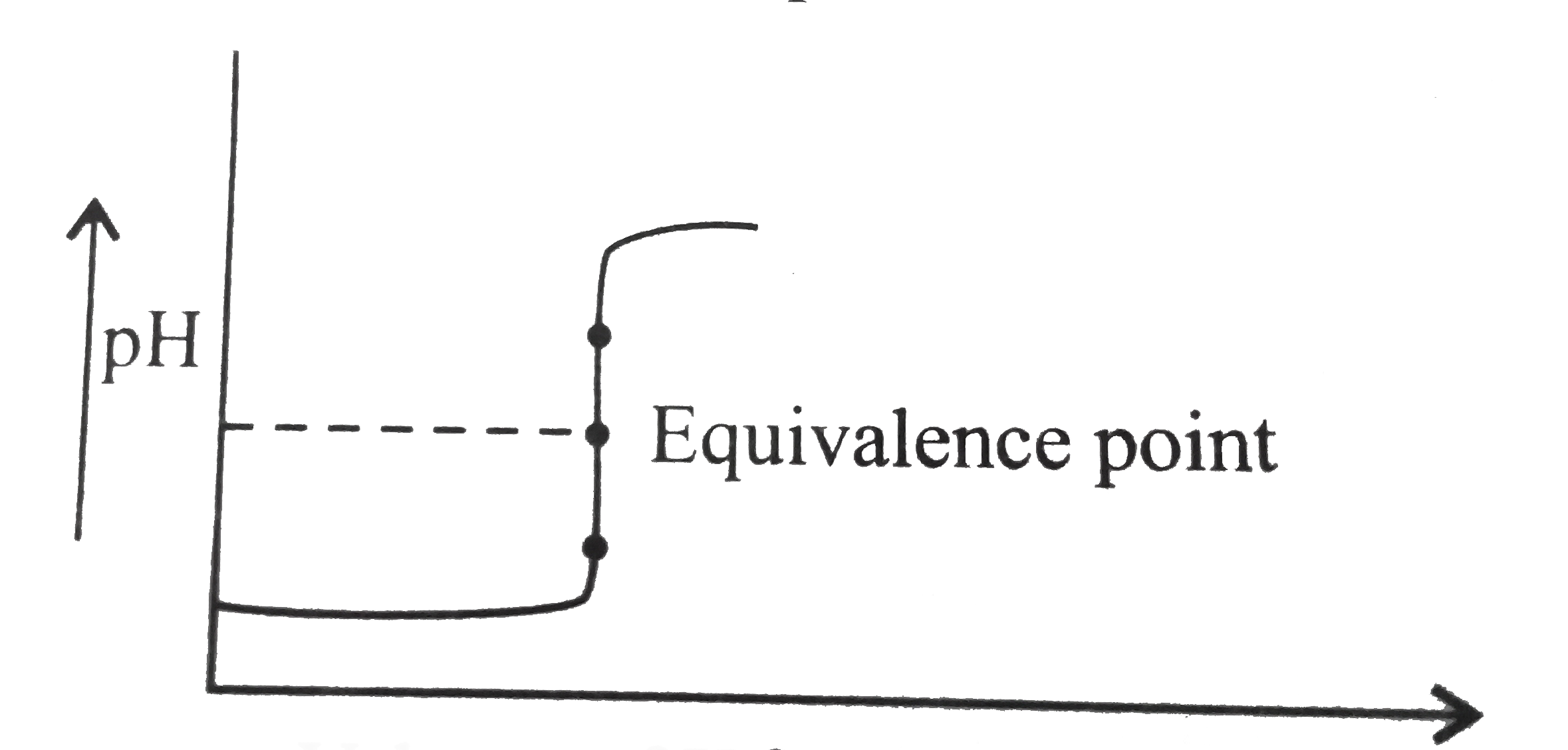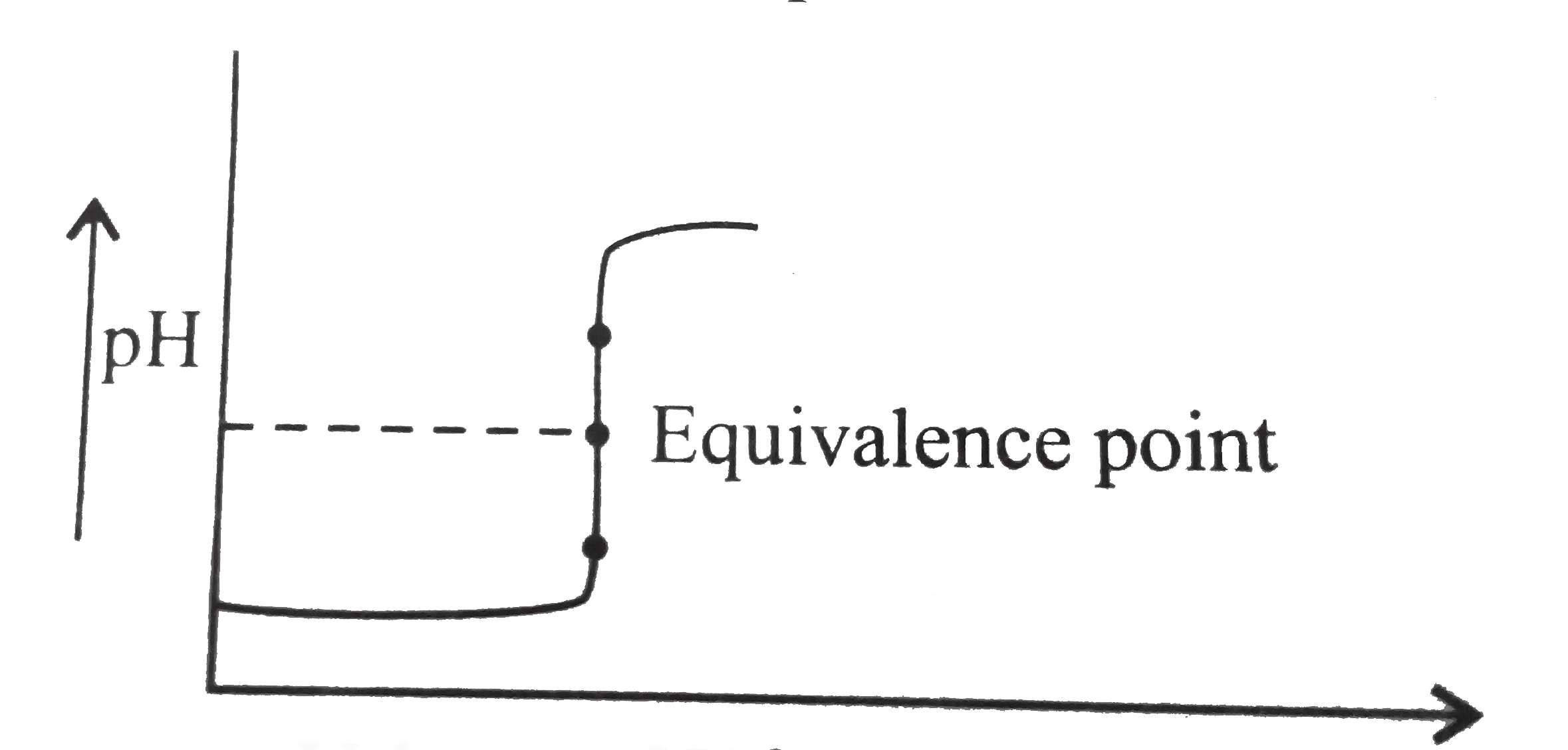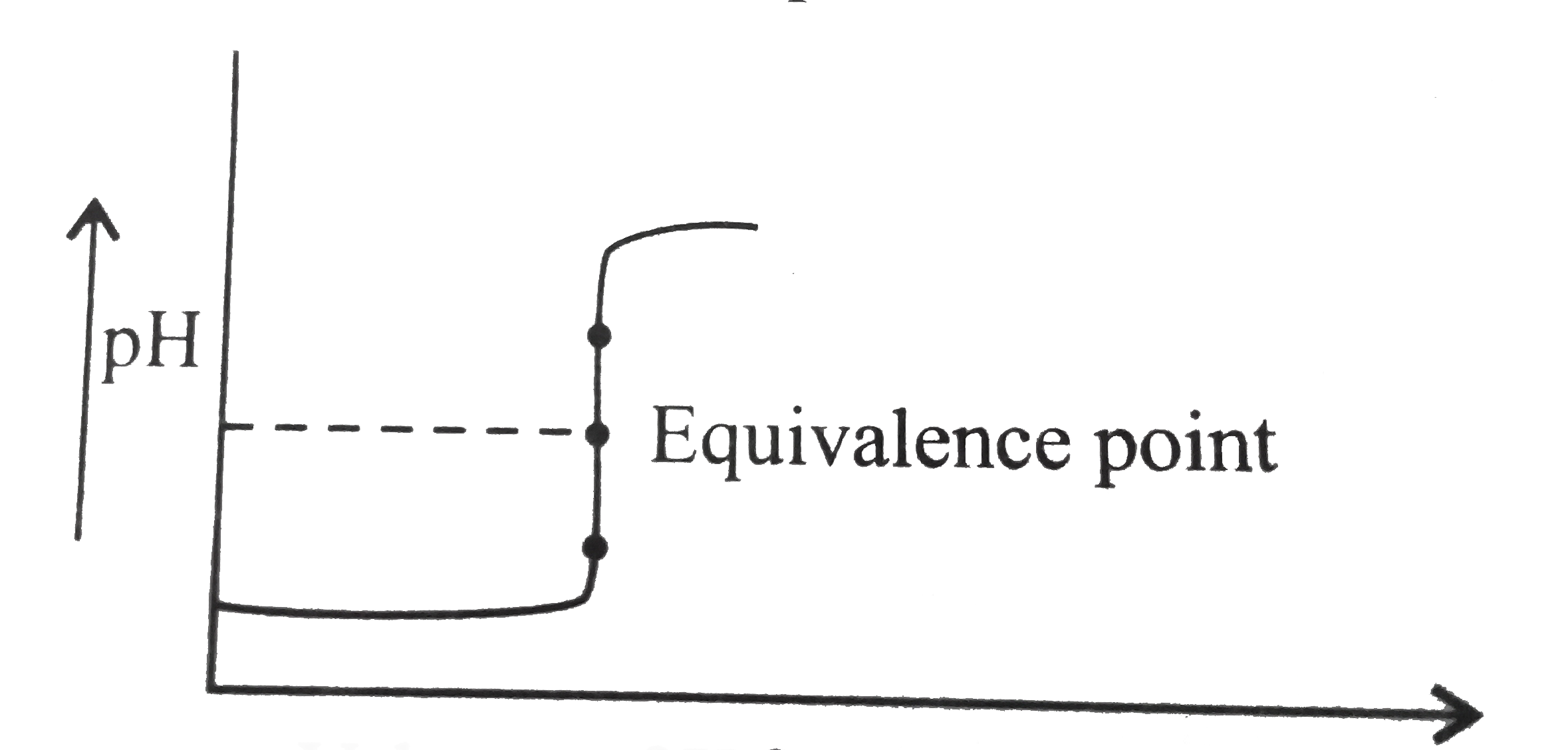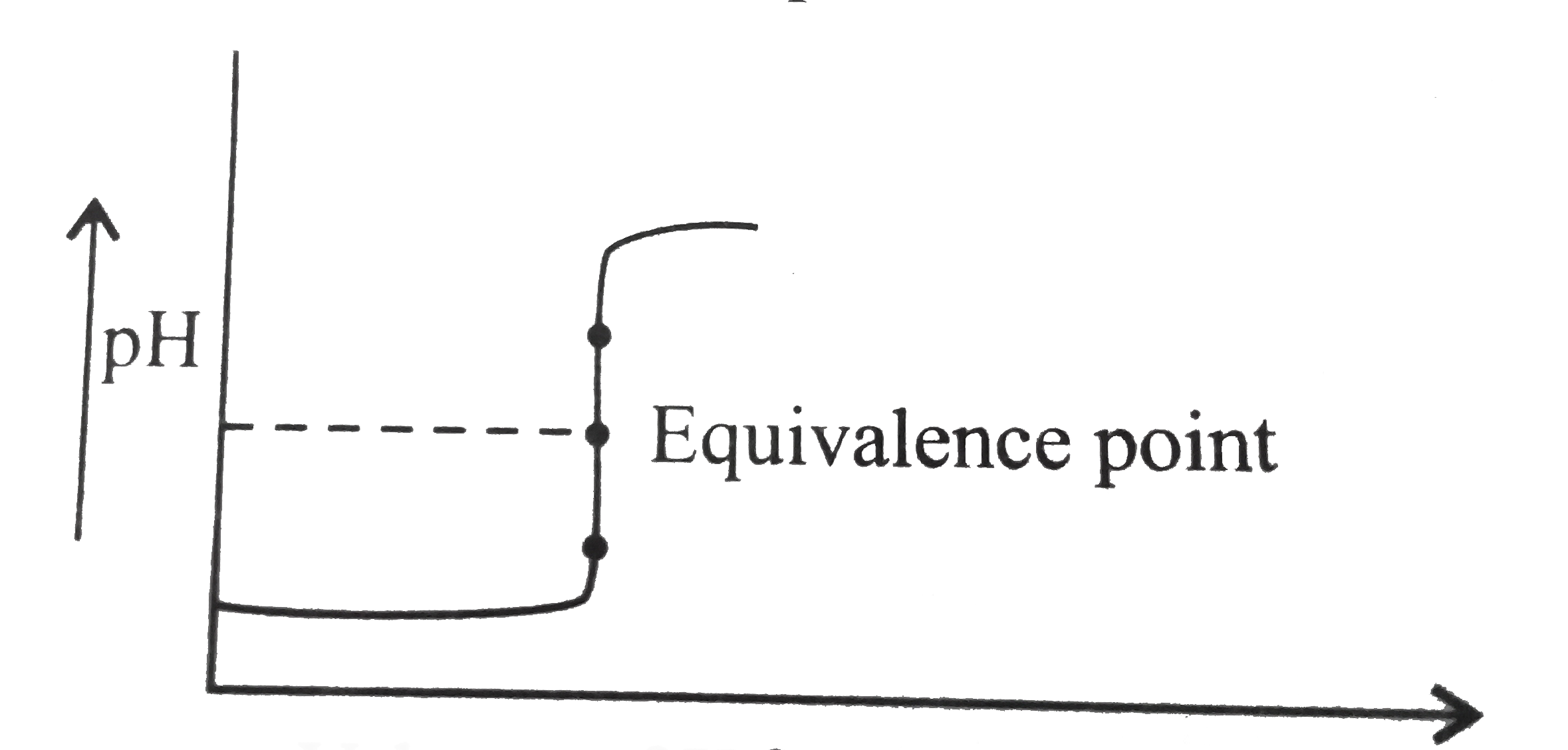An acid-base titration consists of the controlled addition of a dissolved base to a dissolved acid (or the reverse). Acid and base react rapidly to neutralize each other. At the equivalence point, equivalents of reacting substances are equal. The pH during a titration changes every time with a drop of titrant added, but the rate of this change varies enormously. A titration curve, graph of pH as a function of the volume of titrant, displays in detail how the pH changes over the course of an acid base titration. Significantly. the pH changes most rapidly near the equivalence point. The exact shape of a titration curve depends on the KaandKb of acid and base
The pH at equivalence point is:
11
7
3
2
The correct Answer is:B
To determine the pH at the equivalence point of an acid-base titration, we can follow these steps:
1. Understand the Titration Process:
- In an acid-base titration, a base is added to an acid (or vice versa) until the equivalence point is reached. At this point, the amount of acid equals the amount of base in terms of equivalents.
2. Identify the Reaction:
- The neutralization reaction can be represented as:
Acid (HA)+Base (BOH)→Salt (A- B+)+Water (H2O)
- This reaction leads to the formation of a salt and water.
3. Plot the Titration Curve:
- The pH of the solution changes as the titrant (base or acid) is added. The titration curve is a graph of pH versus the volume of titrant added.
4. Analyze the pH Change:
- The pH changes gradually at the beginning and end of the titration but changes rapidly near the equivalence point.
5. Determine the pH at the Equivalence Point:
- For a strong acid (like HCl) and a strong base (like NaOH), the pH at the equivalence point is typically neutral, which is pH 7.
- This is because the salt formed does not hydrolyze and does not affect the pH of the solution.
6. Conclusion:
- Therefore, the pH at the equivalence point for a strong acid-strong base titration is:
pH=7
Final Answer:
The pH at the equivalence point is 7.
---
- In an acid-base titration, a base is added to an acid (or vice versa) until the equivalence point is reached. At this point, the amount of acid equals the amount of base in terms of equivalents.
- The neutralization reaction can be represented as:
Acid (HA)+Base (BOH)→Salt (A- B+)+Water (H2O)
- This reaction leads to the formation of a salt and water.
- The pH of the solution changes as the titrant (base or acid) is added. The titration curve is a graph of pH versus the volume of titrant added.
- The pH changes gradually at the beginning and end of the titration but changes rapidly near the equivalence point.
- For a strong acid (like HCl) and a strong base (like NaOH), the pH at the equivalence point is typically neutral, which is pH 7.
- This is because the salt formed does not hydrolyze and does not affect the pH of the solution.
- Therefore, the pH at the equivalence point for a strong acid-strong base titration is:
pH=7
The pH at the equivalence point is 7.
Similar Questions
An acid-base titration consists of the controlled addition of a dissolved base to a dissolved acid (or the reverse). Acid and base react rapidly to neutralize each other. At the equivalence point, equivalents of reacting substances are equal. The pH during a titration changes every time with a drop of titrant added, but the rate of this change varies enormously. A titration curve, graph of pH as a function of the volume of titrant, displays in detail how the pH changes over the course of an acid base titration. Significantly. the pH changes most rapidly near the equivalence point. The exact shape of a titration curve depends on the KaandKb of acid and base
The suitable indicator for this titration will be:
View SolutionWhich of the following are true for an acid- base titration?
View SolutionWhich of the following is/are true for an acid- base titration?
View SolutionIn acid-base titration react rapidly to neutralise each other. Equivalence point is a point at which the acid and the base (or oxidising agent and reducing agent) have beem added in equivalent quantities. The end point in the point at which the titration stops. since the purpose of the indicator is to stop the titration close to the point at which the acid and base were added in equivalent quantities, it is important that the equivalent point and the end point be as close as must change colour at a pH close to that of a solution of the salt of the acid base. Singificantly, the pH changes most rapidly near the equivalent point. The exact shape of a titration curve depends on Ka and Kb of acid and base.

The pH at equivalence point is
View SolutionWhy the pH at the equivalence point of a titration may differ from 7 ?
View SolutionWhat are acid -base indicators and how do they indicate the end point of an acid -base titration?
View SolutionIn acid-base titration react rapidly to neutralise each other. Equivalence point is a point at which the acid and the base (or oxidising agent and reducing agent) have beem added in equivalent quantities. The end point in the point at which the titration stops. since the purpose of the indicator is to stop the titration close to the point at which the acid and base were added in equivalent quantities, it is important that the equivalent point and the end point be as close as must change colour at a pH close to that of a solution of the salt of the acid base. Singificantly, the pH changes most rapidly near the equivalent point. The exact shape of a titration curve depends on Ka and Kb of acid and base.

The curve represents the titration of
View SolutionIn acid-base titration react rapidly to neutralise each other. Equivalence point is a point at which the acid and the base (or oxidising agent and reducing agent) have beem added in equivalent quantities. The end point in the point at which the titration stops. since the purpose of the indicator is to stop the titration close to the point at which the acid and base were added in equivalent quantities, it is important that the equivalent point and the end point be as close as must change colour at a pH close to that of a solution of the salt of the acid base. Singificantly, the pH changes most rapidly near the equivalent point. The exact shape of a titration curve depends on Ka and Kb of acid and base.

The following curve represents titration curve of HCI against KOH. The pH at equivalent point is
Examine the titration curve below and answer the question.

View SolutionIn acid-base titration react rapidly to neutralise each other. Equivalence point is a point at which the acid and the base (or oxidising agent and reducing agent) have beem added in equivalent quantities. The end point in the point at which the titration stops. since the purpose of the indicator is to stop the titration close to the point at which the acid and base were added in equivalent quantities, it is important that the equivalent point and the end point be as close as must change colour at a pH close to that of a solution of the salt of the acid base. Singificantly, the pH changes most rapidly near the equivalent point. The exact shape of a titration curve depends on Ka and Kb of acid and base.

Which of the following curves indicates the titration of a weak diprotic acid by KOH of equivalent strength?
View SolutionA strong acid is titrated with weak base. At equivalence point, pH will be :
View Solution
